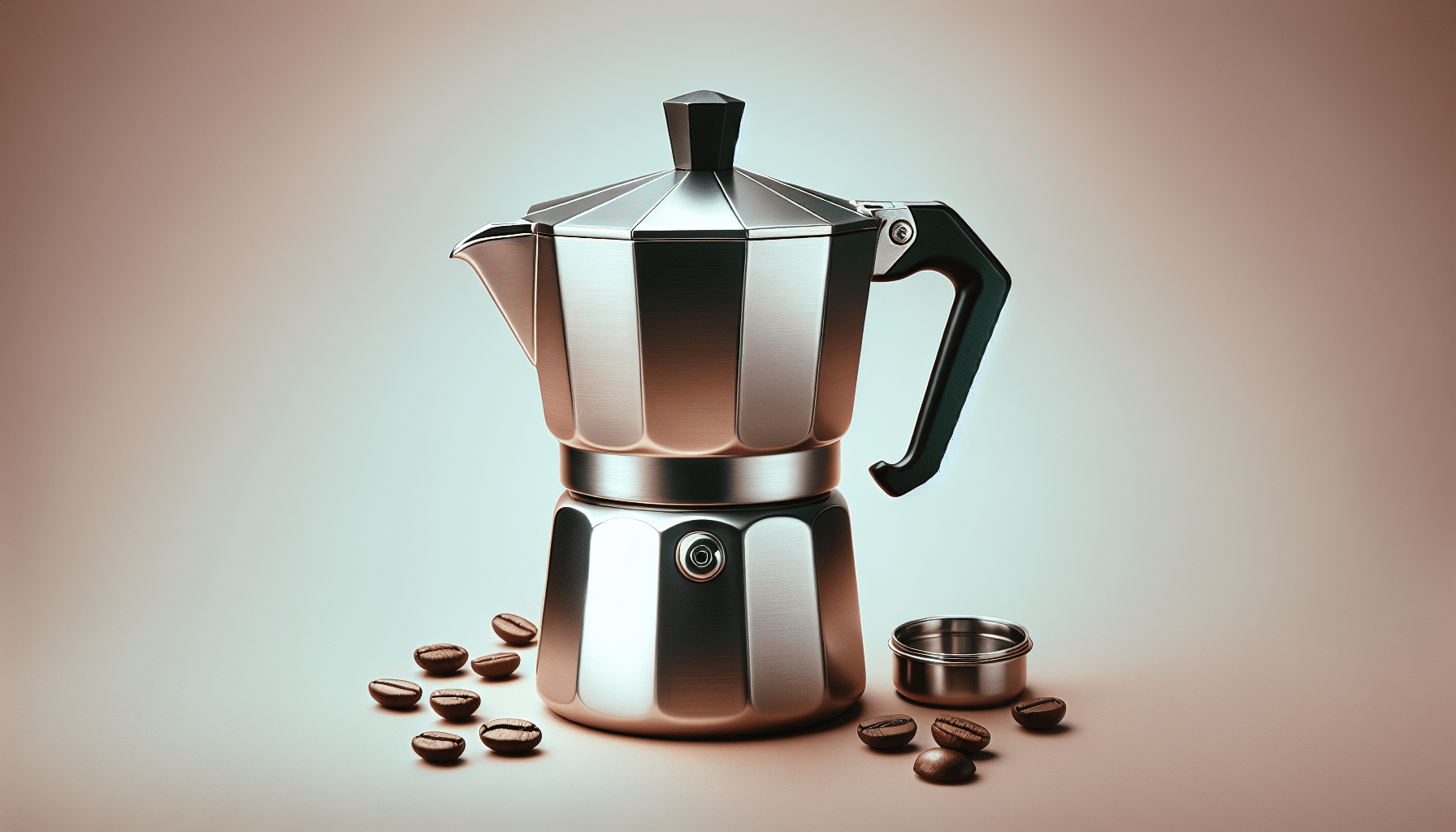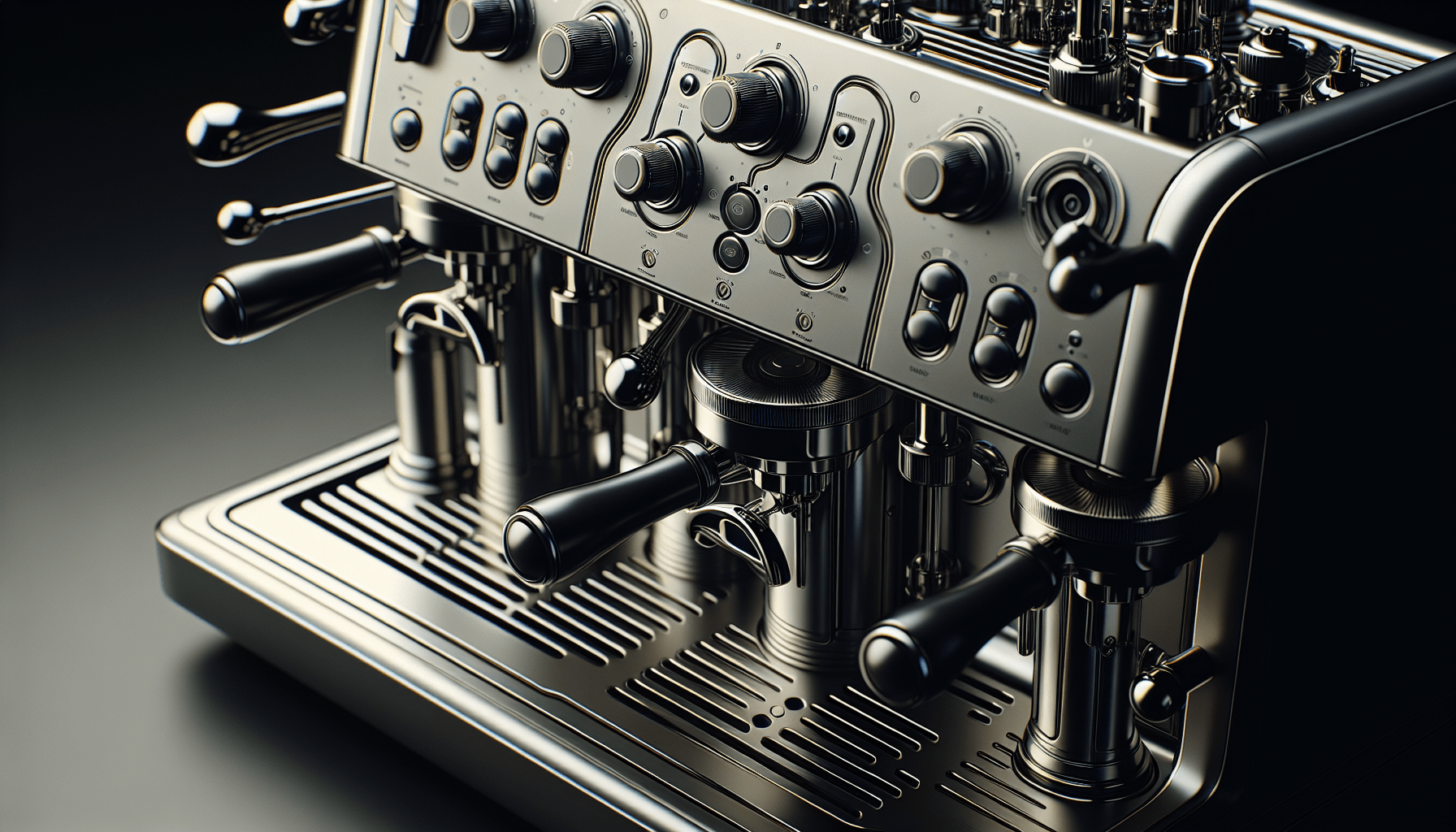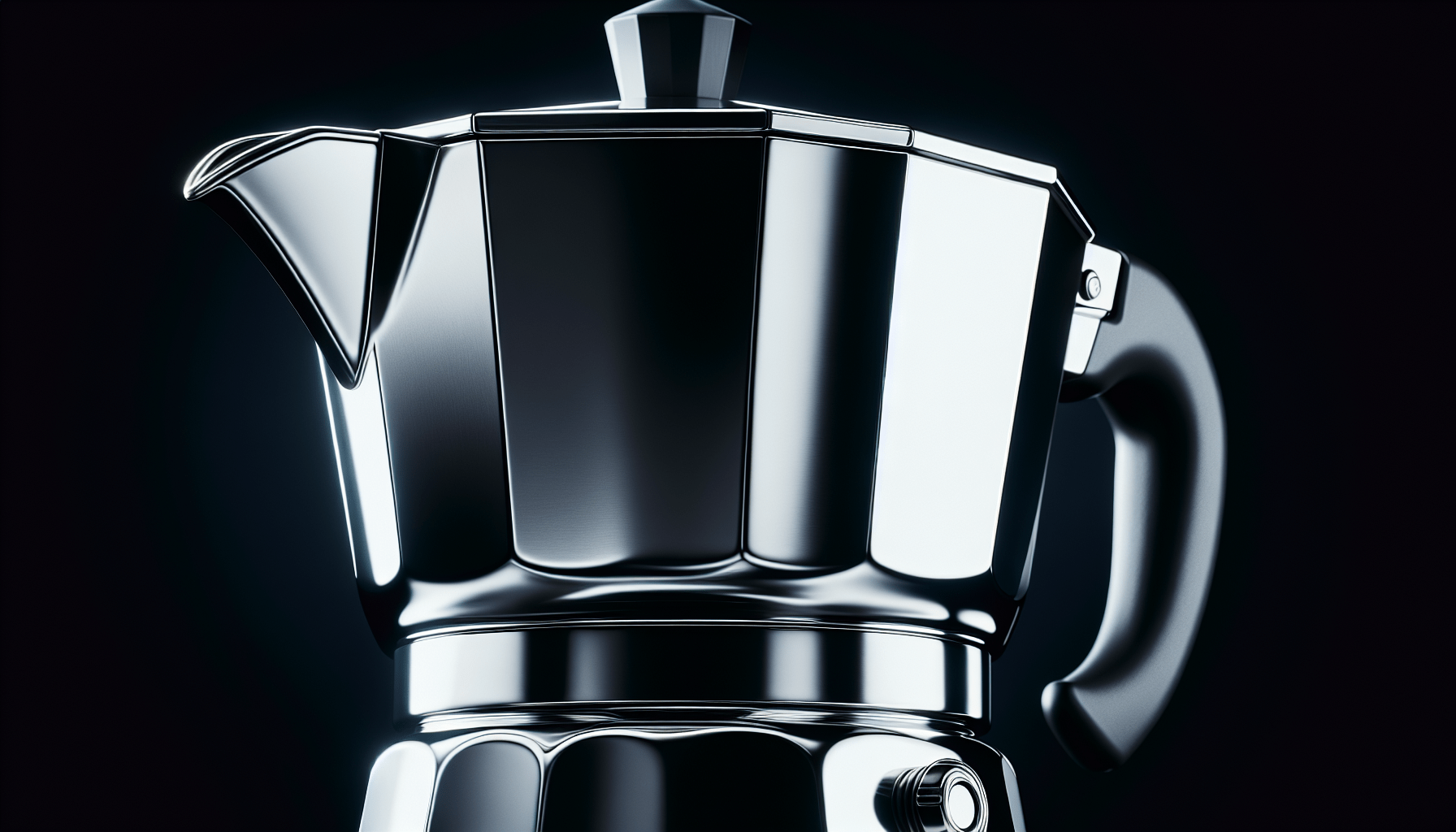If you’re a coffee lover, chances are you’ve heard of stovetop espresso makers. These compact devices are a popular choice for brewing a strong shot of espresso from the comfort of your own home. But have you ever wondered just how durable they are? From accidental drops to daily wear and tear, this article will explore the resilience of stovetop espresso makers and provide insights into their longevity. So, if you’re considering investing in one of these brewing wonders, keep reading to discover just how tough they really are.
Materials used in construction
When it comes to stovetop espresso makers, the choice of materials used in their construction plays a crucial role in determining their durability. Three commonly used materials in stovetop espresso makers are stainless steel, aluminum, and copper. Each material brings its own unique properties and characteristics that contribute to the overall durability of the espresso maker.
Stainless steel
Stainless steel is a popular choice for stovetop espresso makers due to its exceptional durability. One of the main benefits of stainless steel is its corrosion resistance, which prevents rust and degradation over time. This makes stainless steel espresso makers ideal for long-term use, even in humid or damp environments.
In addition to corrosion resistance, stainless steel espresso makers also offer excellent impact resistance. This means they can withstand accidental drops or knocks without sustaining damage. This durability factor is especially important for those who may be a bit clumsy or have a busy kitchen.
The longevity of stainless steel stovetop espresso makers is another key advantage. With proper care and maintenance, these espresso makers can last for many years, making them a worthwhile investment for coffee enthusiasts.
Aluminum
Aluminum is another commonly used material in stovetop espresso makers. One of the main advantages of aluminum is its lightweight design. This makes aluminum espresso makers easy to handle and maneuver, especially when it comes to filling the water reservoir or attaching the top chamber.
Another benefit of aluminum is its excellent heat conductivity. Aluminum heats up quickly and evenly, allowing for faster and more efficient brewing. This can be particularly appealing for those who value speed and convenience in their espresso-making process.
However, it is important to note that aluminum is more prone to corrosion compared to stainless steel. Over time, exposure to moisture and acidic coffee residue can cause the aluminum to corrode, potentially affecting the overall durability of the espresso maker. Regular cleaning and maintenance are necessary to prevent excessive corrosion and prolong the lifespan of aluminum stovetop espresso makers.
Copper
Copper, while not as commonly used as stainless steel or aluminum, offers unique properties that make it an attractive choice for stovetop espresso makers. One of copper’s standout characteristics is its high heat conductivity. Copper heats up quickly and evenly, ensuring optimal extraction and rich, flavorful espresso.
However, copper does come with its drawbacks in terms of durability. One potential issue is tarnishing and patina. Over time, copper develops a distinct patina, which some may find appealing as it adds a rustic charm. However, excessive tarnishing and patina can affect the performance and aesthetics of the espresso maker. Regular cleaning and polishing are necessary to maintain the copper’s shine and prevent degradation.
Additionally, copper requires more maintenance compared to stainless steel or aluminum. It is important to regularly inspect and clean copper stovetop espresso makers to prevent any build-up or damage that could compromise their durability.
Durability of seals and gaskets
While the materials used in the construction of stovetop espresso makers play a significant role in determining their durability, the quality of seals and gaskets is equally important. Seals and gaskets are essential components that ensure a tight seal between the different chambers of the espresso maker, preventing any leaks or loss of pressure during brewing.
The importance of high-quality seals and gaskets cannot be overstated when it comes to the durability of stovetop espresso makers. A faulty or worn-out seal can lead to leaks, affecting the overall brewing experience and potentially damaging other components of the espresso maker.
Materials commonly used in seals and gaskets include rubber, silicone, and even stainless steel. These materials offer excellent flexibility and durability, allowing them to withstand the high temperatures and pressures involved in the espresso-making process.
It is important to regularly inspect the seals and gaskets of your stovetop espresso maker for any signs of wear or damage. Common indications of worn-out seals or gaskets include leaks, loss of pressure, or difficulty in maintaining a consistent brew. If any of these signs are present, it is crucial to replace the seals or gaskets promptly to ensure the longevity and efficiency of your espresso maker.
Replacing seals and gaskets
Replacing seals and gaskets is a relatively straightforward process and can be done at home with the right tools and parts. Many manufacturers provide replacement seals and gaskets, and instructions are usually included in the product manual or available online.
When replacing seals and gaskets, it is important to ensure that you are using the correct specifications recommended by the manufacturer. Using the wrong size or type of seal or gasket can result in leaks or an improper seal, compromising the durability and performance of your stovetop espresso maker.
Impact of brewing method on durability
The brewing method used with stovetop espresso makers can have an impact on their overall durability. Two popular brewing methods are the traditional method and the moka pot method. Understanding the differences between these methods and their potential effects on the durability of your espresso maker is essential for making an informed decision.
Traditional vs. moka pot brewing method
The traditional brewing method involves filling the bottom chamber of the espresso maker with water, adding ground coffee to the middle chamber, and then placing it on the stovetop. As the water heats up, pressure builds up, forcing the water through the coffee grounds and into the top chamber.
The moka pot method, on the other hand, separates the water and coffee grounds into two chambers. The water is heated in the bottom chamber, creating steam that forces the water up through the coffee grounds and into the top chamber.
Pressure and stress on components
Both brewing methods generate pressure and stress on the components of the stovetop espresso maker. The force created by the pressure can put strain on the seals, gaskets, and other vulnerable parts. Additionally, the repeated heating and cooling of the espresso maker during the brewing process can also contribute to wear and tear over time.
While both brewing methods can potentially affect the durability of stovetop espresso makers, it is important to note that a well-designed and properly constructed espresso maker should be able to withstand the pressures and stresses of daily use without significant damage or degradation.
Cleaning and maintenance
Proper cleaning and maintenance are vital for ensuring the durability and longevity of your stovetop espresso maker. Regular cleaning removes coffee residue, oils, and mineral deposits that can build up over time and compromise the performance of the espresso maker.
Cleaning instructions
The specific cleaning instructions for your stovetop espresso maker may vary depending on the materials used and the manufacturer’s recommendations. However, there are some general cleaning guidelines that apply to most stovetop espresso makers.
-
Disassemble the espresso maker: Before cleaning, ensure that the espresso maker has cooled down and is safe to handle. Disassemble the different components, including the water reservoir, coffee basket, and upper chamber.
-
Rinse with warm water: Rinse each component with warm water to remove any loose coffee grounds or residue. Avoid using harsh detergents or abrasive cleaners, as these can damage the materials and affect the taste of your espresso.
-
Clean with mild soap: For thorough cleaning, use mild soap or a specific espresso machine cleaner. Gently scrub each component with a soft brush or sponge to remove any stubborn stains or build-up.
-
Rinse thoroughly: After cleaning, make sure to rinse each component thoroughly to remove any soap residue. Any residue left behind can affect the taste of your espresso.
Frequency of maintenance
The frequency of cleaning and maintenance for your stovetop espresso maker depends on how often you use it and the specific manufacturer’s recommendations. As a general guideline, it is recommended to clean your espresso maker after each use. This ensures that there are no residual coffee grounds or oils that can accumulate and affect the taste or performance of subsequent brews.
Additionally, it is beneficial to perform a deep cleaning at least once every few months. This involves disassembling the espresso maker and thoroughly cleaning each component, including seals and gaskets, to remove any built-up residue or mineral deposits.
Avoiding damage during cleaning
While cleaning is essential for maintaining the durability of your stovetop espresso maker, it is important to exercise caution to avoid causing any damage during the cleaning process.
Avoid using abrasive scrubbers or harsh chemicals that can scratch or corrode the surfaces of your espresso maker. Stick to soft brushes, sponges, and mild soaps to clean the components effectively.
When reassembling the espresso maker after cleaning, ensure that all seals and gaskets are properly aligned and in good condition. Applying a thin layer of food-grade lubricant on the seals can help ensure smooth operation and prevent unnecessary wear and tear.
Brand reputation and customer reviews
When considering the durability of stovetop espresso makers, it is important to research reliable brands and consider customer feedback. A reputable brand with a history of producing high-quality and durable espresso makers is more likely to provide a product that will stand the test of time.
Researching reliable brands
Take the time to research different brands and their reputation in the coffee industry. Look for brands that have been around for a while and have a proven track record of producing durable and reliable stovetop espresso makers. Online reviews, coffee forums, and specialty coffee websites can provide valuable insights into the performance and durability of different brands.
Considering customer feedback
Customer reviews offer firsthand experiences and opinions that can help in evaluating the durability of stovetop espresso makers. Look for reviews that specifically highlight the longevity, reliability, and overall durability of the espresso maker. Pay attention to any recurring issues or concerns mentioned by multiple customers, as these may be indicative of potential durability issues.
Long-term user experiences
In addition to customer reviews, reaching out to long-term users of stovetop espresso makers can provide valuable insights into the durability and performance of specific products. Personal recommendations from friends or family members who have owned a particular brand or model for an extended period can offer valuable information and help in making an informed decision.
Warranty and return policies
The warranty and return policies offered by the manufacturer are important considerations when it comes to the durability of stovetop espresso makers. A generous warranty and flexible return policy indicate that the manufacturer has confidence in the durability and quality of their product.
Length and coverage of warranty
Check the length and coverage of the warranty offered by the manufacturer. A longer warranty period, typically spanning a few years, is an indication that the manufacturer is confident in the durability and performance of their espresso maker.
It is also important to review the specific coverage details of the warranty. Some warranties may only cover manufacturing defects, while others may include coverage for parts and labor. Understanding the terms and conditions of the warranty can help you determine the level of support and protection you can expect.
Conditions for warranty claims
Familiarize yourself with the conditions for warranty claims. Manufacturers may have specific requirements, such as proof of purchase or registration of the product, to validate a warranty claim. Failure to meet these conditions may result in the denial of your claim, even if the issue falls within the warranty period.
It is also important to note that warranties typically exclude damage caused by misuse, neglect, or accidents. Understanding what is covered and what is not can help you make an informed decision and ensure that you follow the proper care and maintenance guidelines to maintain the warranty’s validity.
Return and exchange policies
In addition to warranty coverage, it is valuable to review the return and exchange policies offered by the manufacturer or retailer. A flexible return policy allows you to return or exchange the espresso maker within a specified period if you are not satisfied with its durability or performance.
Understanding the timeframe for returns, any associated fees or restocking charges, and the condition of the product required for a return or exchange can help you feel confident in your purchase and provide peace of mind regarding the durability of your stovetop espresso maker.
Price range and value for money
The price range of stovetop espresso makers can vary significantly based on factors such as brand, materials used, and additional features. While a higher price point may not always guarantee better durability, it is important to consider the value for money when making a purchase.
Factors affecting price
Multiple factors can contribute to the price of stovetop espresso makers. The brand reputation, materials used, craftsmanship, overall design, and additional features such as built-in pressure gauges or heat-resistant handles can influence the cost of the espresso maker.
Higher-end brands that prioritize durability and use premium materials may command a higher price. However, it is important to carefully consider whether the additional cost is justified by the enhanced durability, performance, or longevity offered.
Balancing durability and cost
When considering the price of a stovetop espresso maker, it is essential to balance durability with cost. While a more expensive espresso maker may offer superior durability and longevity, it may not always be necessary for every individual’s specific needs.
Consider factors such as how often you will be using the espresso maker, your budget, and the level of durability required based on your lifestyle and expectations. A mid-range espresso maker that offers a balance between cost and durability may be a suitable option for many coffee enthusiasts.
Value of investment
Ultimately, the value of purchasing a stovetop espresso maker lies in its durability and ability to provide consistent, high-quality espresso over an extended period. Investing in a durable espresso maker can save you money in the long run by eliminating the need for frequent replacements or repairs.
Consider the overall value of a stovetop espresso maker by assessing its expected lifespan, the quality of materials used, the manufacturer’s reputation, and customer reviews. A durable espresso maker that provides excellent performance and longevity is an investment that can enhance your coffee experience for years to come.




